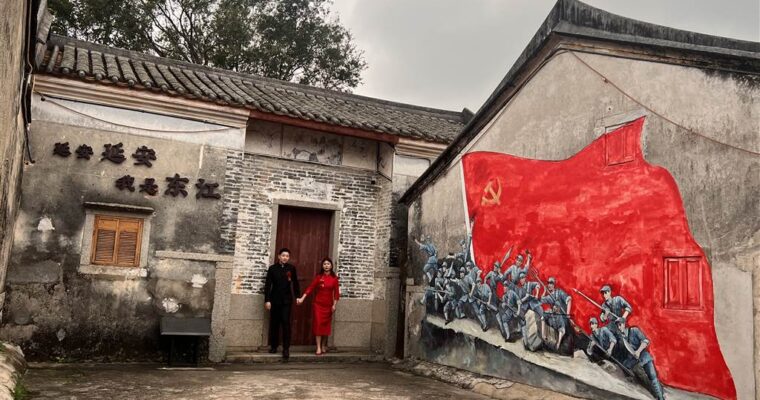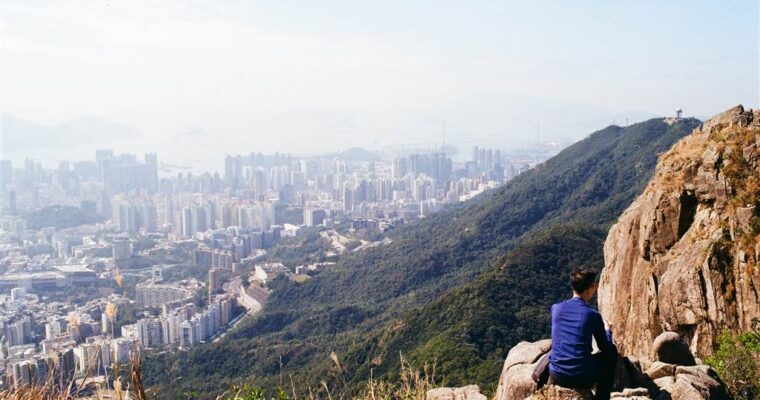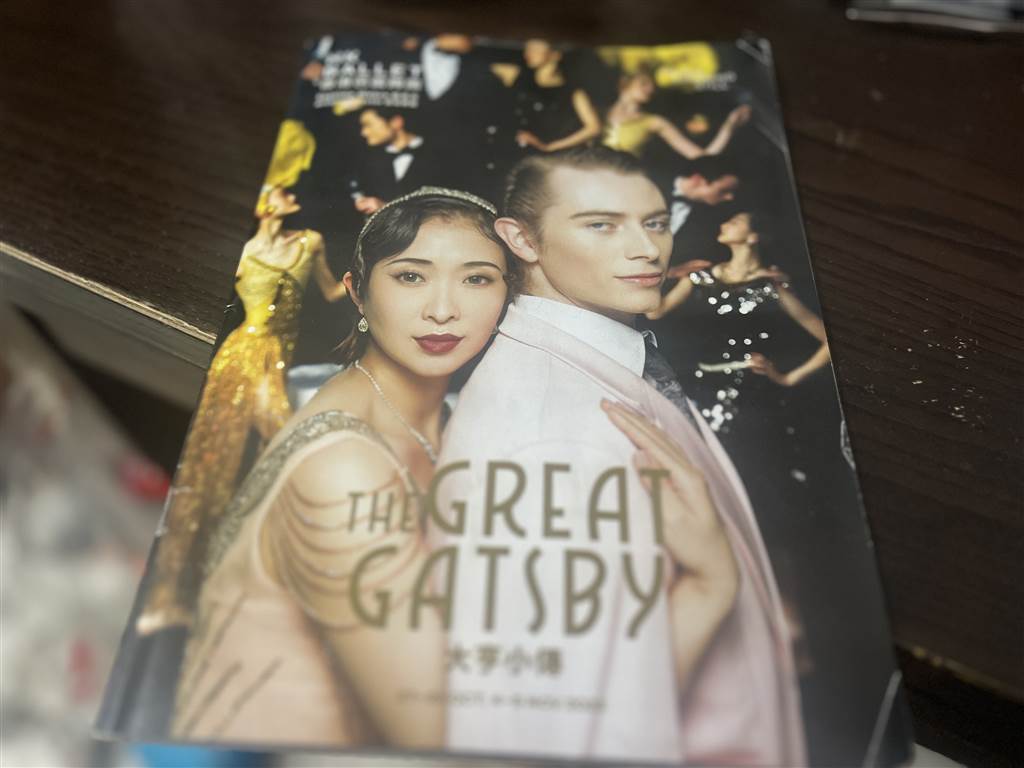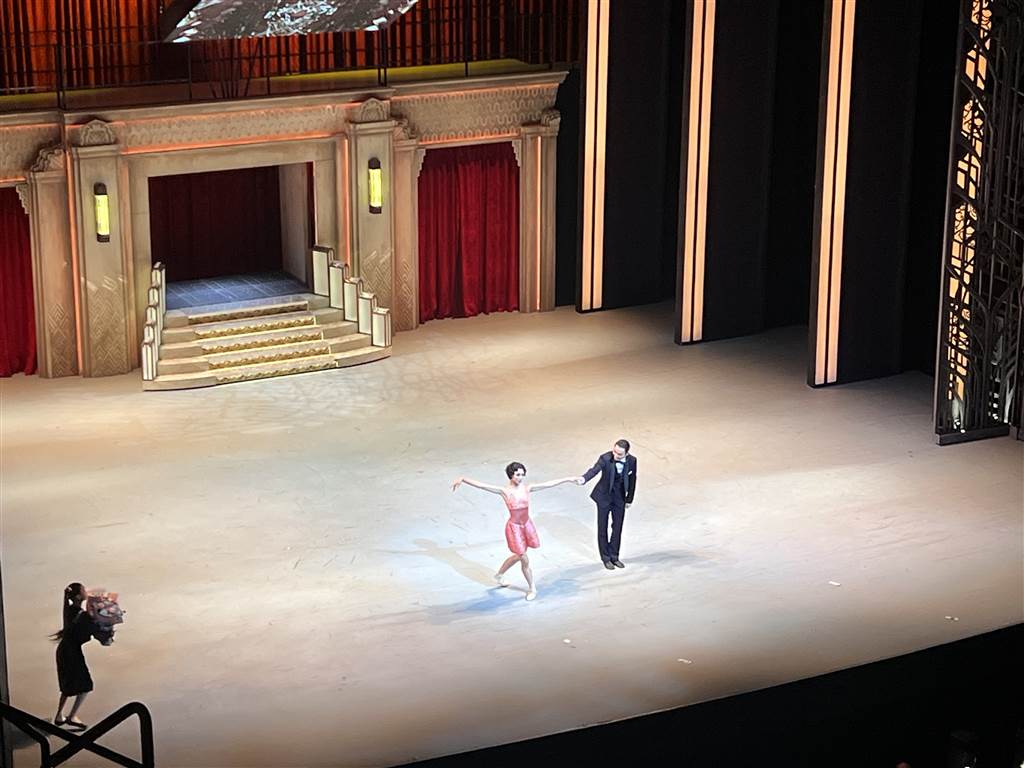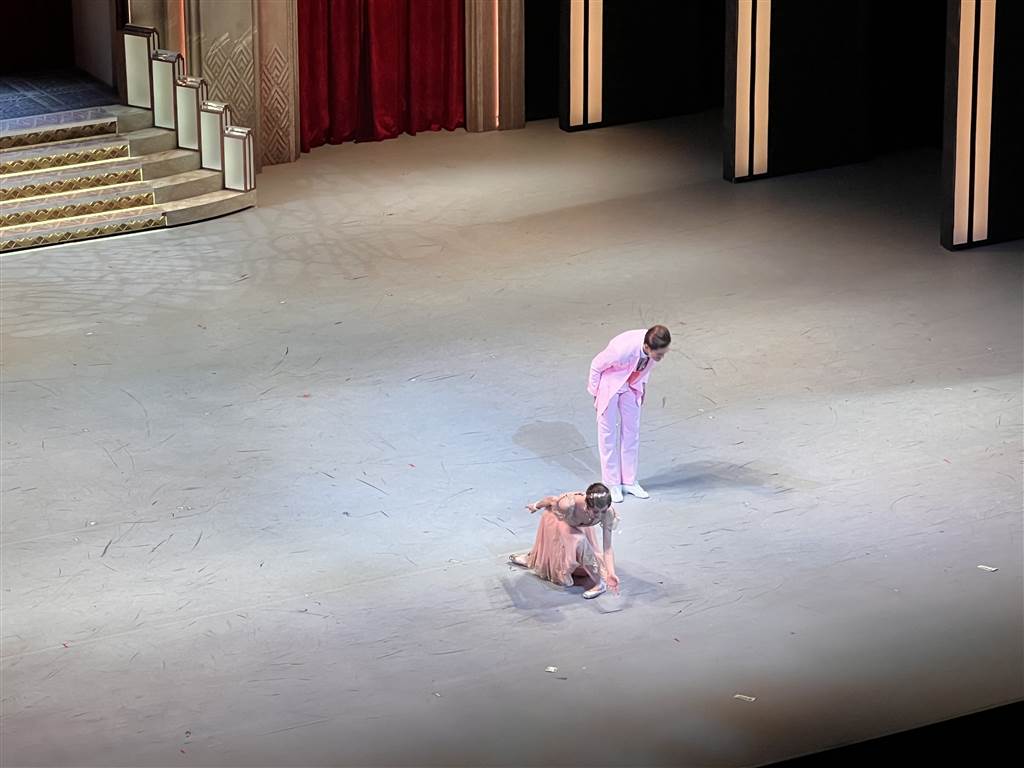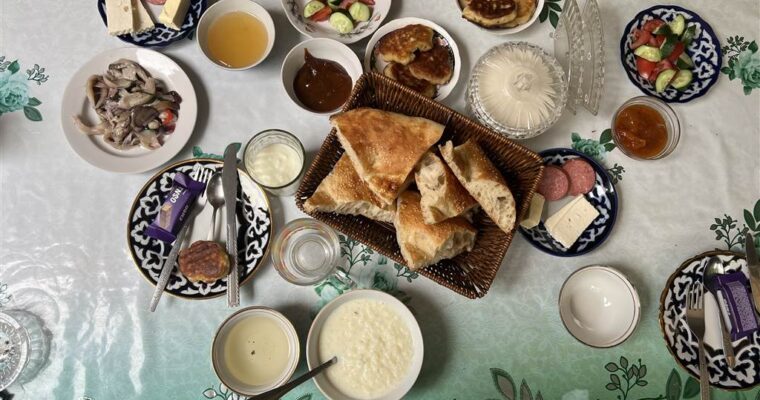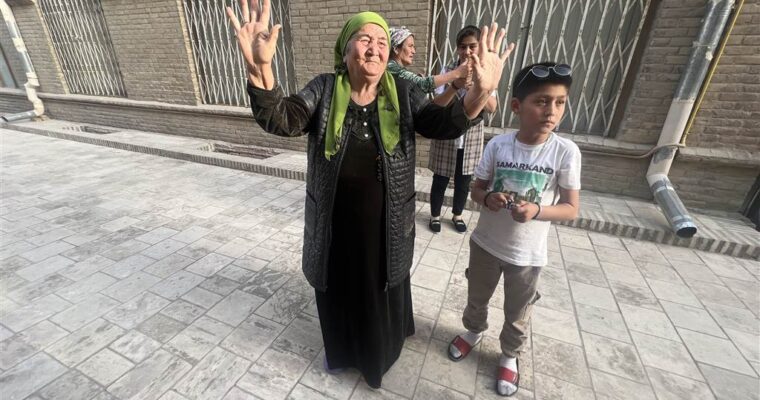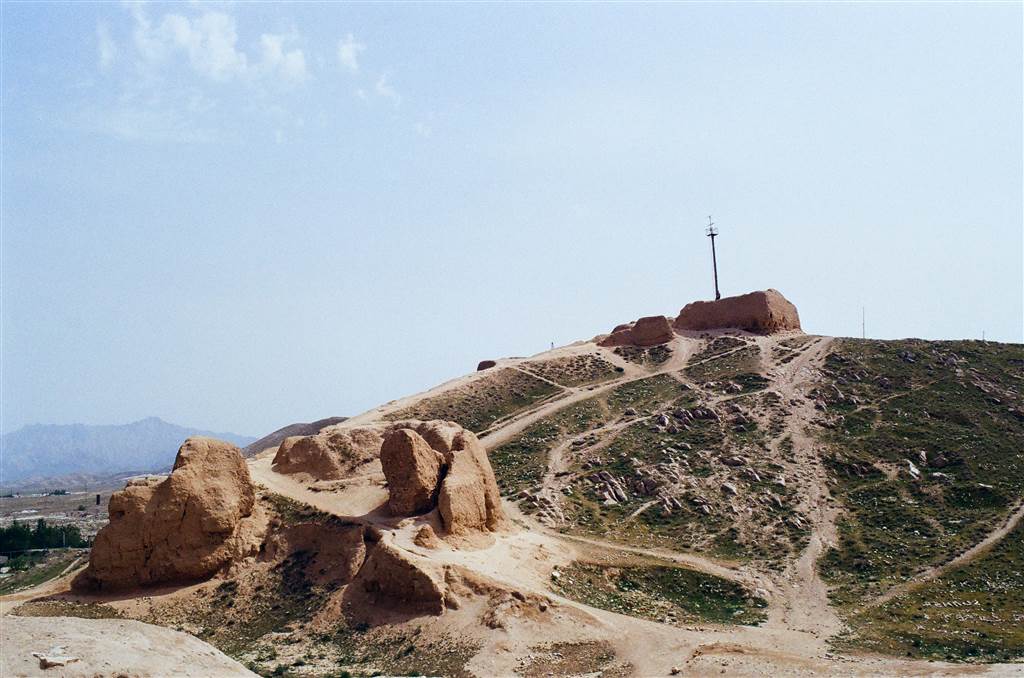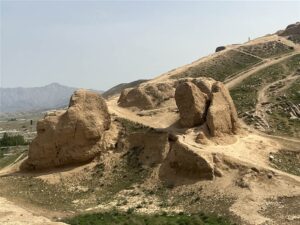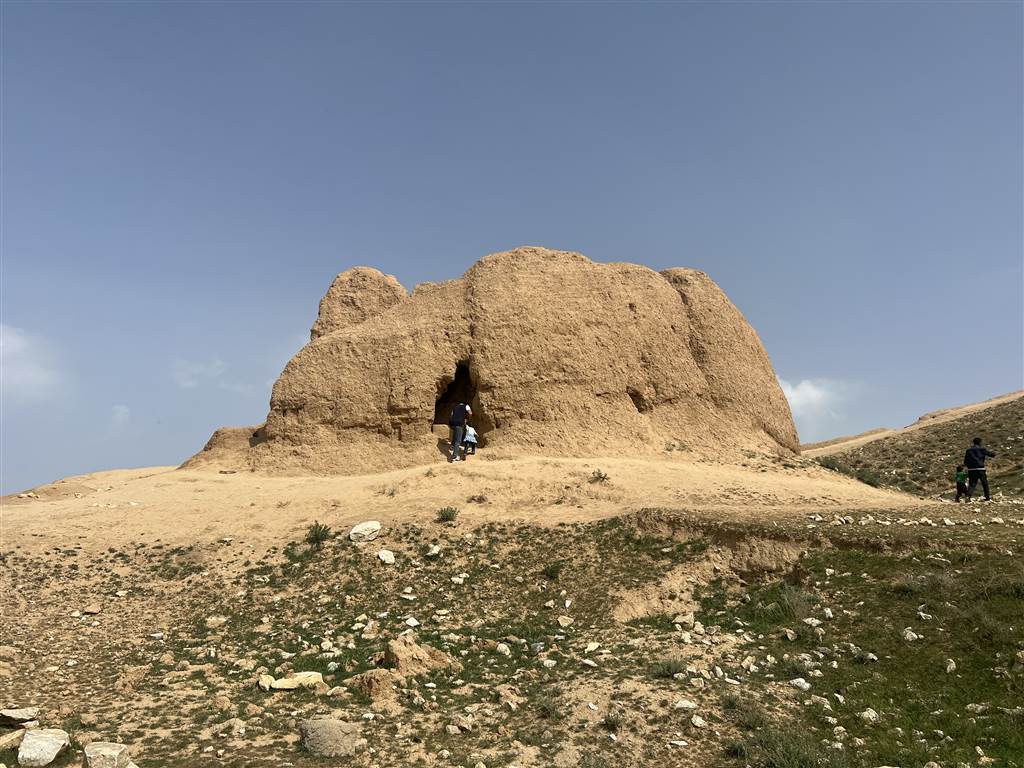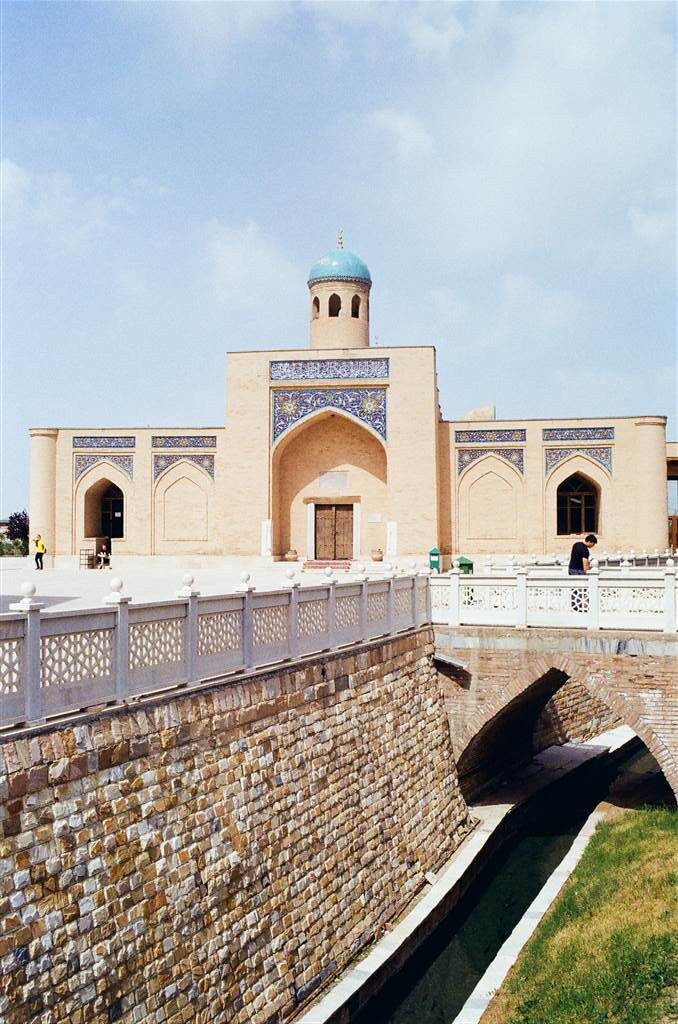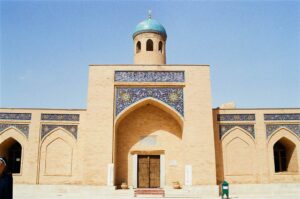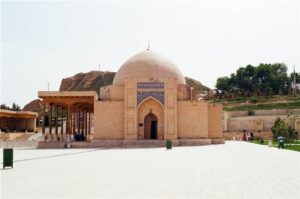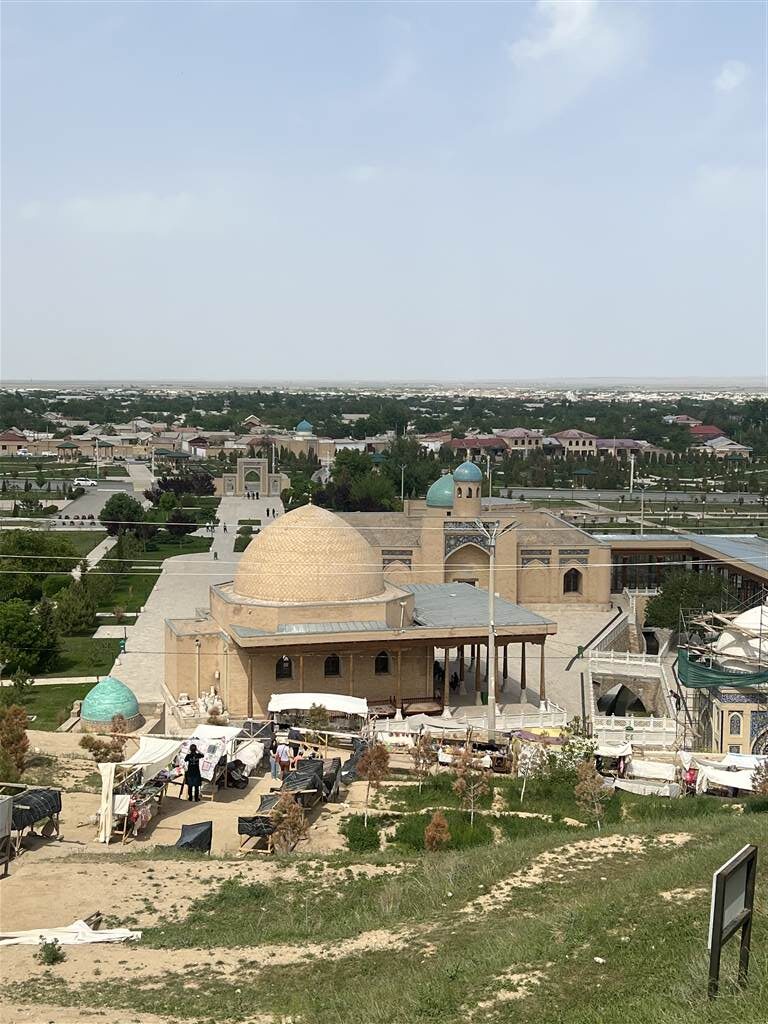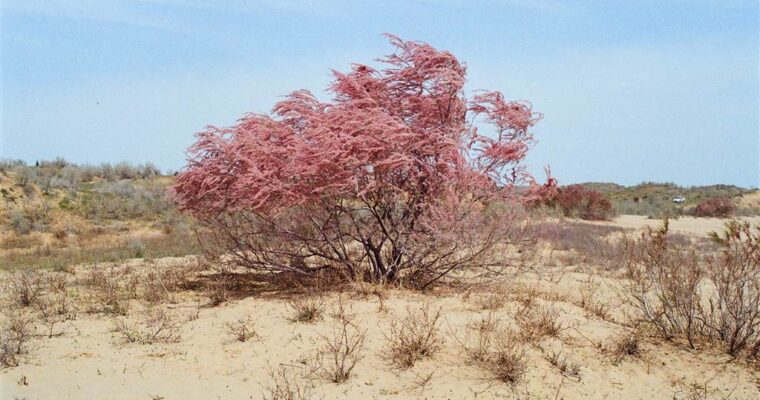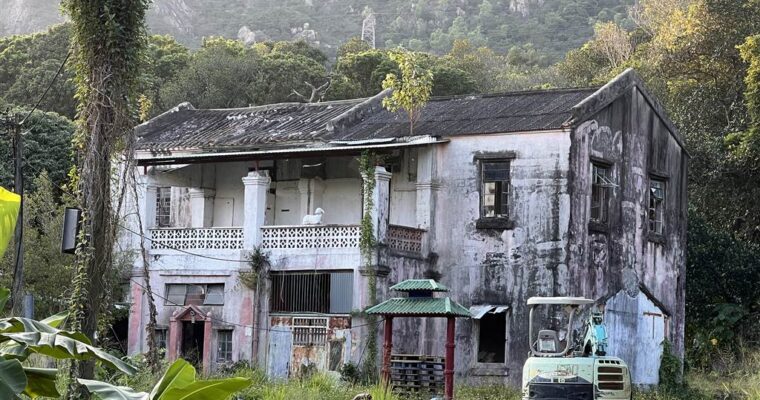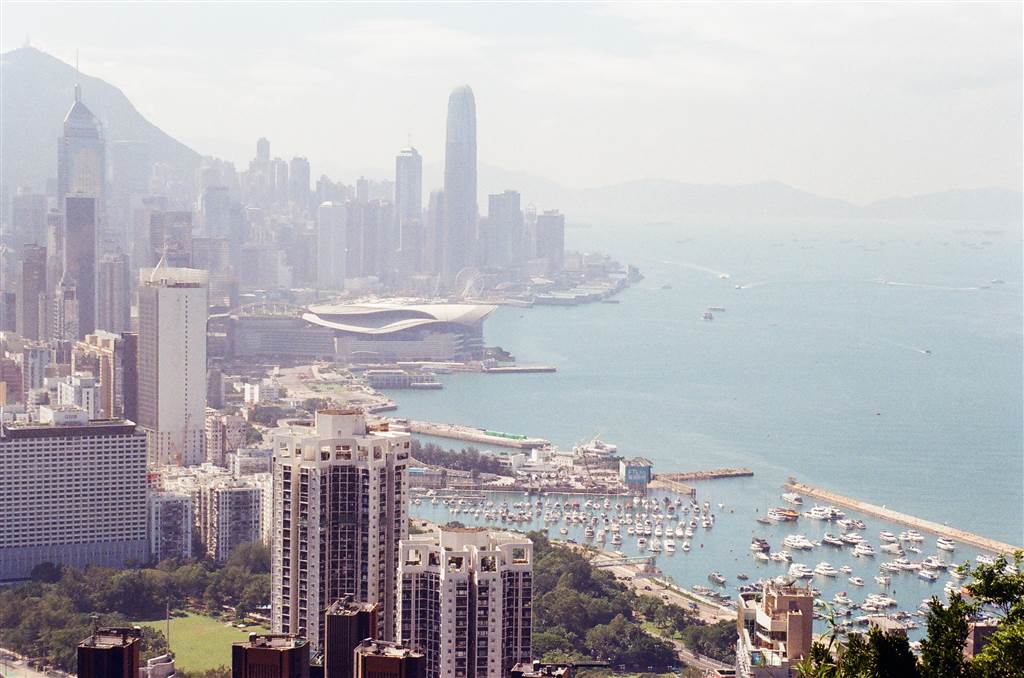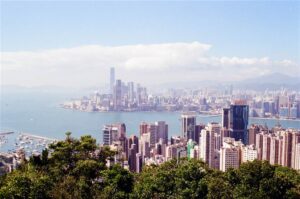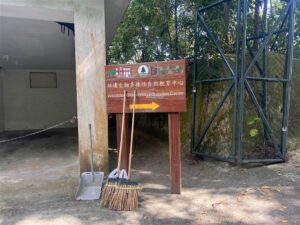The netizens of Hong Kong are very familiar with Hung Heung Lo Fung, a vantage point that is perfect for viewing and taking photographs of Hong Kong’s famous harbor skyline. At an altitude of 228 meters, the small peak provides unobstructed views on the west side of the Victoria Harbor. It also shows the somewhat less pleasing views on the east.
Photos: A Panorama of Hong Kong’s Skyline on the Western Side
The Easy Way Up
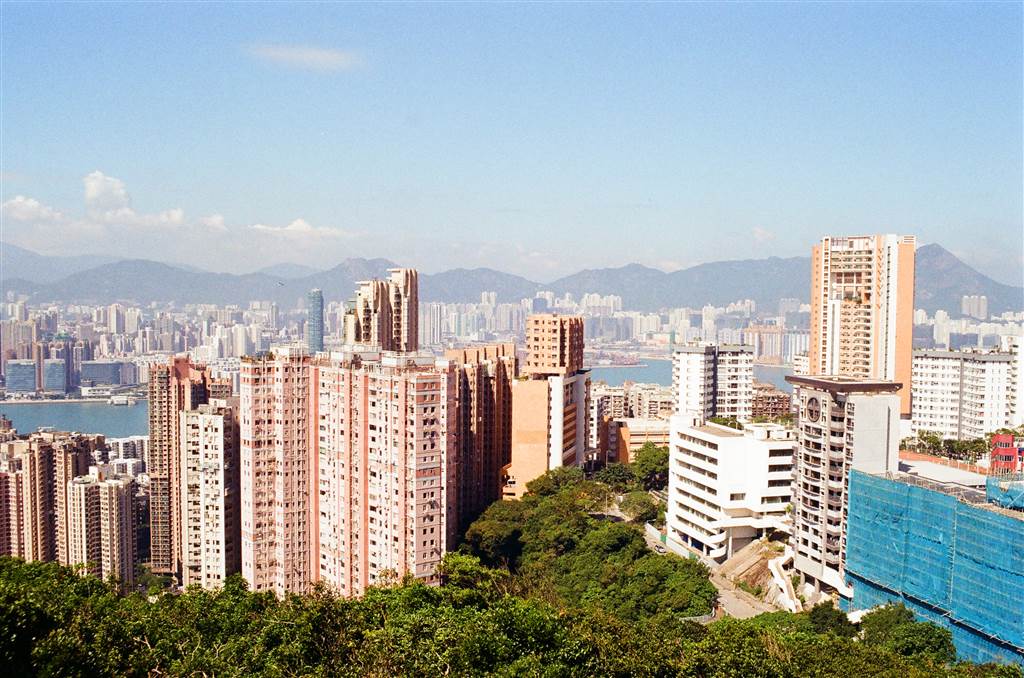
Photo: View of the East Side of Victoria Harbor at Hung Heung Lo Fung
For the hiking of this day I chose the hard way up the Hung Heung Lo Fung, and I will share about this way below. I do not recommend the hiking route that I took, however. For the purpose of simply climbing 228 meters to see the views, there is no need to do it my way.
There is a very convenient shortcut from the city up to Hung Heung Lo Fung. From Paterson Street in Causeway Bay, take Green Top Minibus Route 25 to Braemar Hill.

Get off at the final stop, then walk toward the St. Joan of Arc Secondary School. At the end of Braemar Hill Road, there is a set of stairs leading down first and then up. Keep on climbing for about 10-15 minutes, and you will arrive at the path that will lead you to Hung Heung Lo Fung. Once you finish climbing this flight of stairs, make a right. Keep on going for about three minutes, and the path up Hung Heung Lo Fung will be on your right when you come across the first intersection.
Note that, once you are up, there are two viewing points. When you arrive at the first one, just look up and you will see the signpost above you. Find your way up that signpost for even more significant views.
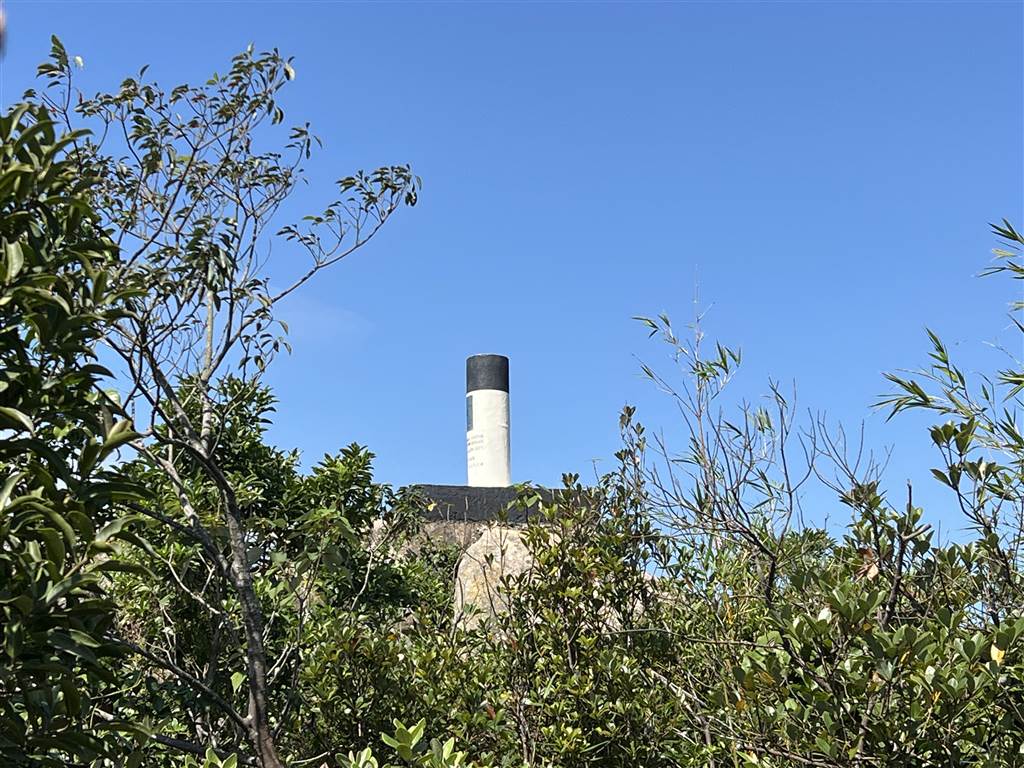

Map: The Easy Way Up (the Purple Line)
The Hard Way Up
For the purpose of hiking a significant way to Hung Heung Lo Fung, I began the walk from Quarry Bay and went westward toward the Braemar Hill area. The difficult part came in a small, unnamed hill somewhere in between, where I had to engage on all fours to climb, with a pathway that was somewhat obscure. I did clock in quite a bit of exercise within a very agreeable weather that day, however. I was glad that I did eventually make it back to civilization.
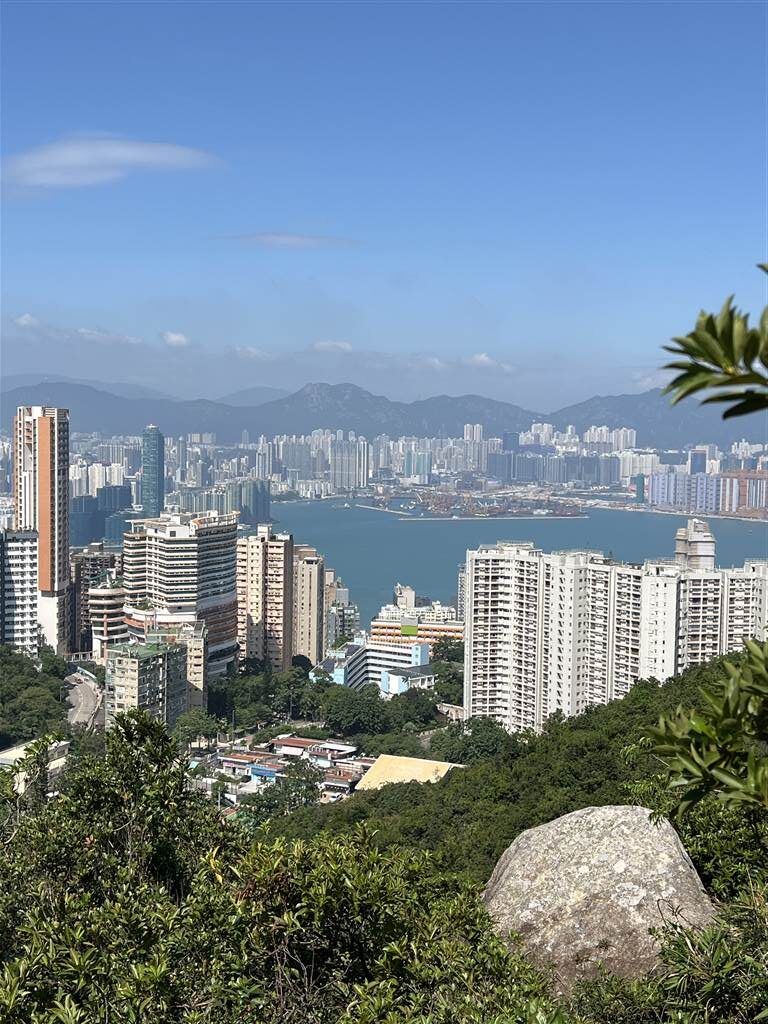
I shall not share the way on this entry, for somewhere along I myself did not know which way I went and how I made it back. However, when I was still on the right track in the earlier sections of the walk, I did visit an interesting heritage site.
The Woodside
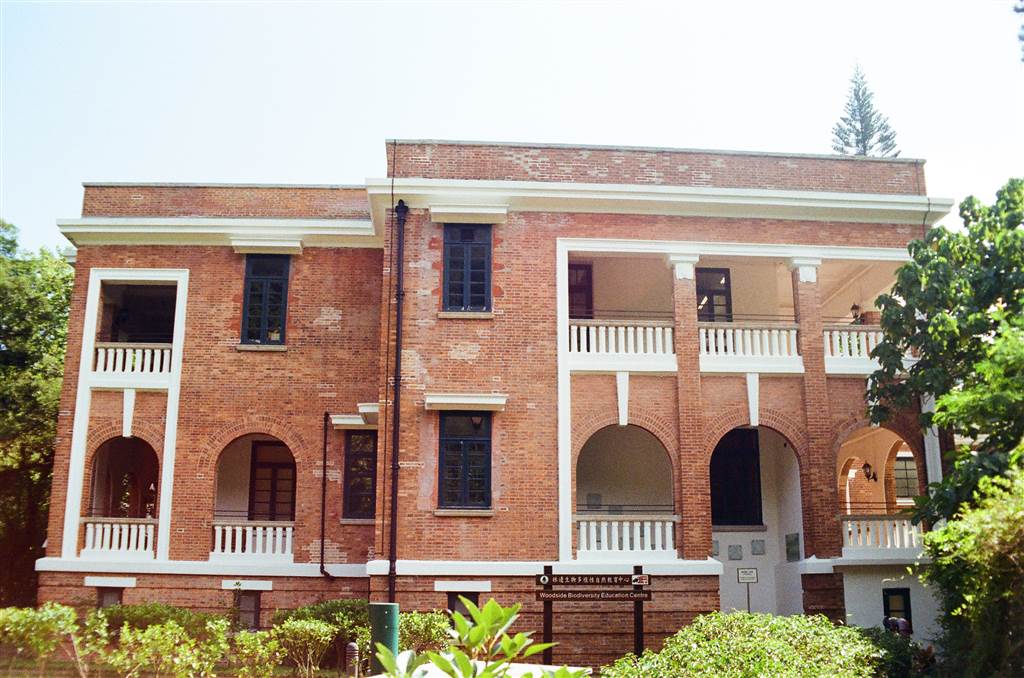
The heritage site of Woodside lies on Mount Parker at the beginning of this trail. The Swire Group built it during the 1920s, originally intended to house the quarters for the European staff in the mid-management of the Swire Group.
The red brick building features two stories with an arched veranda. The foundation is built from granite, and the interiors were fitted with wooden floors and staircases and window frames. The original building had two separate sections.
The first Woodside was destroyed by the Japanese forces during WWII. The Swire Group then restored the building between 1947 and 1951. During this restoration, the former two separate sections were joined together. In 1972, when the Taikoo Sugar Factor closed, the building became vacant.
The building has been restored and managed by the Hong Kong Government since 1976. Since 2012, it opened its doors for public visits as the Woodside Biodiversity Education Centre. Please note that the museum closes on Tuesdays except on public holidays. I happened to visit on a Tuesday so I did not get to see the exhibits. Please check the opening hours of the Biodiversity Education Centre here.
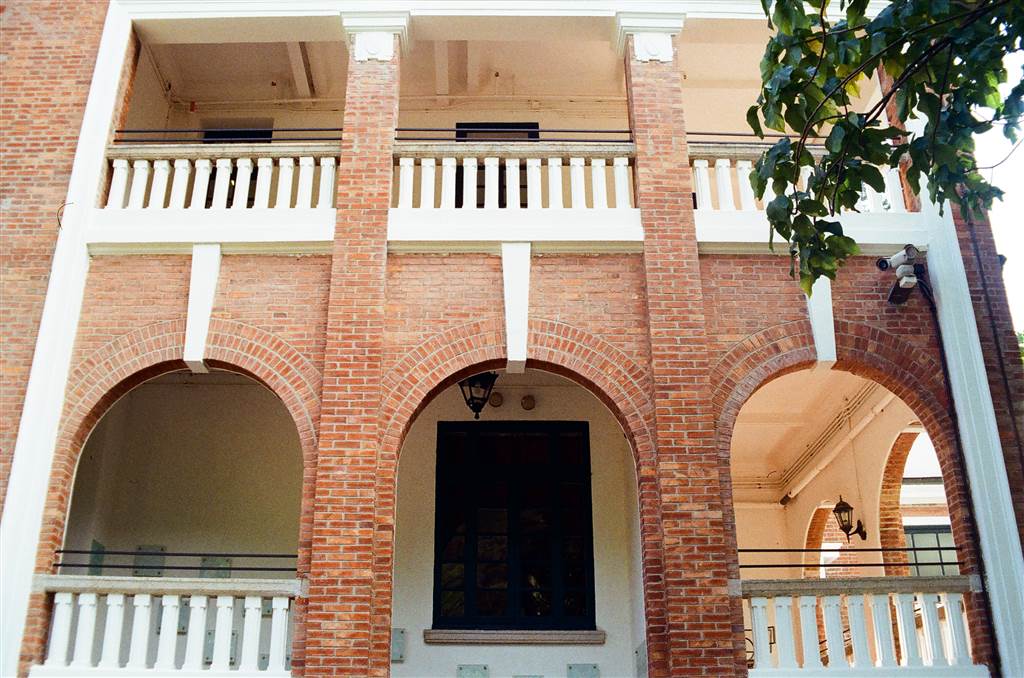
The Woodside is a Grade II Historic Building in Hong Kong. The address of Woodside is 50 Mount Parker Road. To visit, head up from Quarry Bay MTR station toward Mount Parker Road and walk on a gentle incline for some 15 to 20 minutes.
Photos: Mount Parker Road on the Way Up to the Woodside and the Sign for Woodside
The View
Some of the views along this path were quite nice.
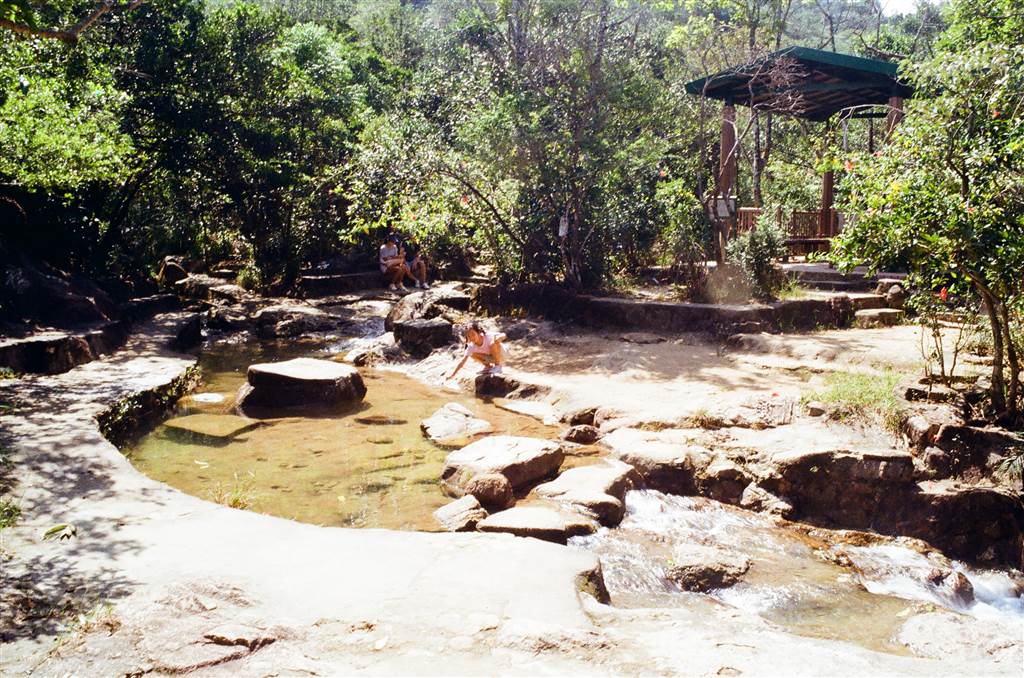
Sources
The Wikipedia on the Woodside (Chin).

